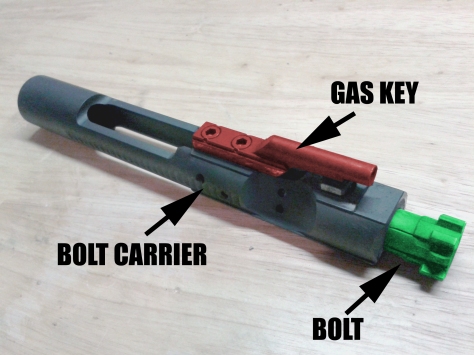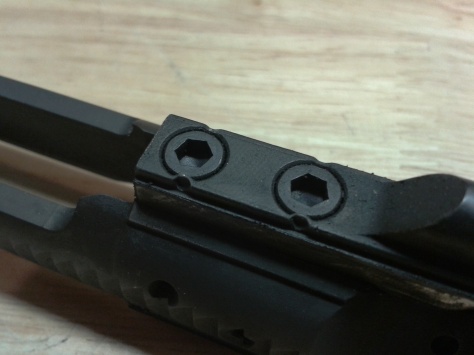In the AR operating system, the bolt; the part that makes contact with the round, locks it into the chamber and extracts the spent casing, is housed in a “carrier”. This carrier is operated by gas pressure that is created when a bullet is fired. The gas drives the carrier back…extracting the spent casing. A spring system pushes the carrier back forward, feeding a round for the next firing cycle.
This video shows the process:
As you see, gas from the fired round is tapped from the barrel and fed down the gas tube and into the gas key. This drives the carrier and bolt rearward, cycling the weapon. This method of operation is called Direct Impingement.
The gas key is held to the carrier by two bolts. It is possible that after repeated firings that these bolts can loosen. This can allow gasses to escape from between the key and the carrier body. If this happens not enough gas pressure will be delivered to the carrier resulting in problems like failure to cycle, short stroking, failure to extract and jamming of the weapon.
Loosening of the gas key is prevented by a handful of methods, but the most common method is achieved by applying the proper torque to the gas key bolts and then “staking” them into place. Staking is done by driving some metal from the gas key base onto the sides of the bolt heads…preventing movement.
One of the signs of a quality bolt carrier is proper staking of the gas key. If you have to do it yourself, there are different methods ranging from using simple hand tools like punches and hammers to purchasing a purpose made tool like the MOACKS.



